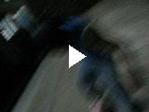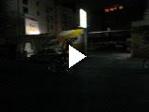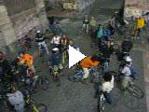Crossing the border from Honduras, I could immediately tell El Salvador is far less poor than Honduras (see comparison). I could buy any food that I wanted at the store (muffins and chocolate milk, in this case), and the pavement on the roads was well maintained.
I spent two days in the small town of Guarjila, were I learned of the civil war. Between 1980 and 1992, the El Salvador government fought a violent war against a large part of the population that demanded more rights, particularly the right to own land. The U.S. government, fearing a ‘socialist takeover,’ spent billions of dollars supporting the El Salvadorian government, whose war tactics included the massacre of entire mountain villages. At least 75,000 people died. You can read more here.
The town of Guarjila was in the resistance during the war, and I heard a woman talk about her experience as a young medical assistant. She talked about performing amputations at the age of 16, as well as losing many of her family members. Her talk was for a group of visiting U.S. high school students, and it was translated to English as she spoke (photo left). Delmy, the woman, who had only finished 4th grade before the war began, returned to school at the war’s end and is now a doctor working in Guarjila.
Since the war, the El Salvadorian economy has grown quickly, strangely fuelled by large amounts of money sent back from El Salvadorians working abroad, mostly in the U.S. Billboards along the road advertised the best way to send your ‘remesa’ money back to the country. In San Salvador, the capital, I biked to the Multiplaza, a lavish mall serving the country’s wealthy. To be sure, most people in El Salvador are still poor, and somehow, the mall made me feel very uncomfortable.
I talked at two schools in El Salvador. I talked to the environmental club at the American School, a private school in San Salvador, and also at Centro Escolar Caserio, a public school in the mountains.
I left the country through the mountain town of Perquin, which saw some of the heaviest fighting of the war. I visited the civil war museum, which was in town, and saw large craters that were left from where 500 lb bombs had been dropped. My guide, who fought in the war, described what it was like when the bomb fell and everything within 150 meters was blown away.
A special thanks to John Guiliano, the students of Brebeuf, and the Tamarindos for making me welcome in the country of El Salvador. I spent two and a half days with this group in Guarjila (where the video of Demly was taken), and greatly enjoyed myself. And yes, here are the obligatory pictures of firemen – thanks to the firemen of Chalantenango and San Francisco Gotera for letting me stay with them.







